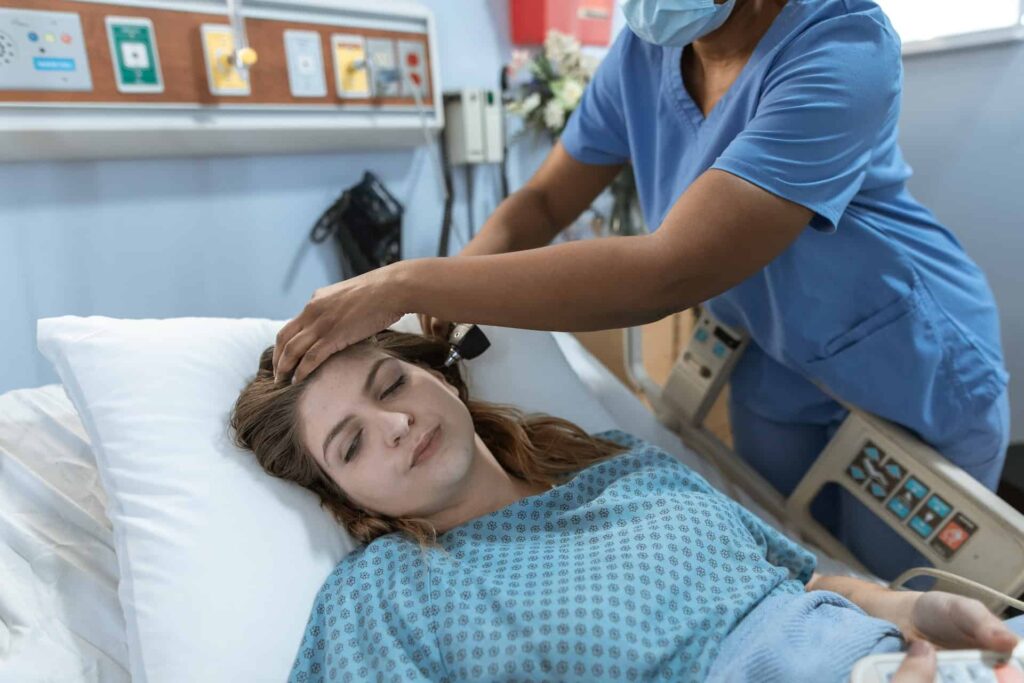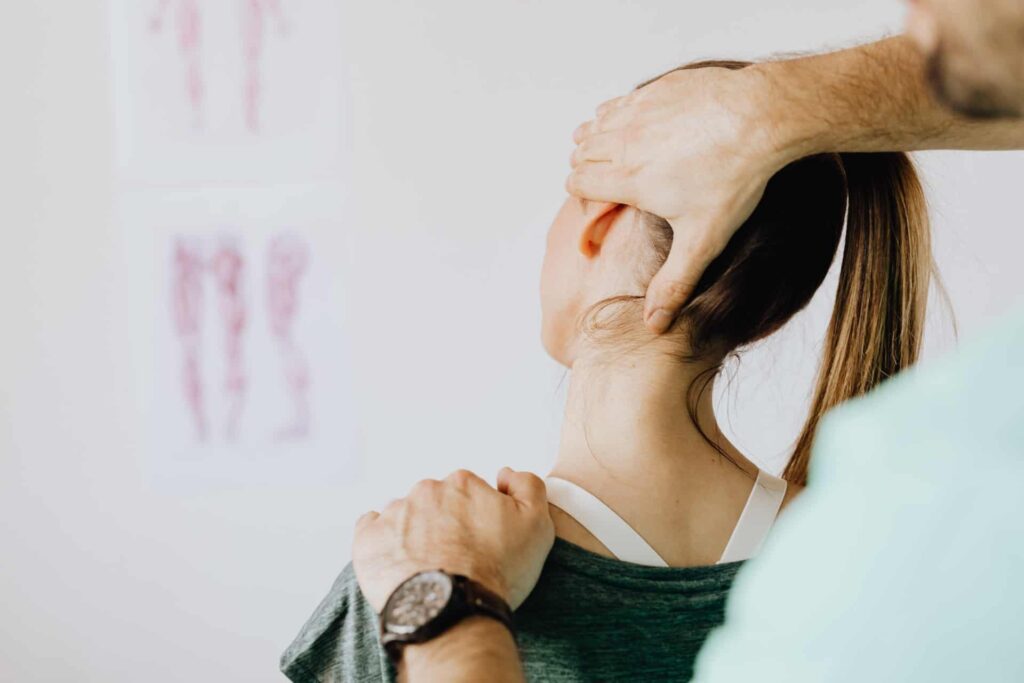An acoustic neuroma diagnosis can be scary, but with proper treatment and rehabilitation, many patients are able to regain their balance and function. Let’s explore what acoustic neuromas are, the surgical options available, and the rehabilitation process that helps patients recover.
- What is an Acoustic Neuroma?
- Surgical Treatment Options
- The Recovery Process of Acoustic Neuroma Surgery
- Vestibular Rehabilitation Therapy for Acoustic Neuroma Surgery
- Other Aspects of Acoustic Neuroma Rehabilitation
- When to Seek Help
- The Road to Acoustic Neuroma Surgery Recovery
- Looking Ahead with Acoustic Neuroma Rehabilitation
What is an Acoustic Neuroma?
An acoustic neuroma, also called a vestibular schwannoma, is a benign (non-cancerous) tumor that grows on the nerve connecting the inner ear to the brain. This nerve is responsible for hearing and balance. As the tumor grows, it can press on nearby structures and cause symptoms like:
- Gradual hearing loss on one side
- Ringing in the ear (tinnitus)
- Problems with balance and dizziness
- Facial numbness or weakness
Acoustic neuromas are rare, affecting only about 1 in 100,000 people each year. They tend to grow slowly over time. In some cases, the tumor may be small enough that doctors recommend just monitoring it with regular MRI scans. However, larger tumors often require treatment to prevent serious complications.

Surgical Treatment Options
When an acoustic neuroma needs treatment, there are a few main options:
- Microsurgery – This involves removing all or part of the tumor through an incision in the skull. There are three main surgical approaches.
- Translabyrinthine – Removes bone behind the ear to access the tumor. This approach sacrifices hearing but provides a good view of the facial nerve.
- Retrosigmoid – Accesses the tumor from the back of the head. This can sometimes preserve hearing for smaller tumors.
- Middle fossa – Enters through the skull above the ear. This gives the best chance of hearing preservation for small tumors.
- Stereotactic radiosurgery – This uses precisely targeted radiation to stop tumor growth. It’s often used for smaller tumors or in older patients who may not tolerate open surgery well.
The choice of treatment depends on factors like tumor size, patient age and health, and whether hearing preservation is possible. Your doctor will discuss the pros and cons of each option.
The Recovery Process of Acoustic Neuroma Surgery
Recovery after acoustic neuroma surgery takes time and patience. Most patients spend 3-4 days in the hospital immediately after surgery. During this time, doctors monitor for any complications and help manage pain or nausea.
Once home, patients need to rest and gradually increase activity over several weeks. Most people can return to work and normal activities within 6-12 weeks. However, full recovery of balance function can take much longer – up to a year or more in some cases.
This is where rehabilitation becomes crucial. A proper rehab program helps retrain the brain to compensate for changes in the vestibular (balance) system.

Vestibular Rehabilitation Therapy for Acoustic Neuroma Surgery
Vestibular rehabilitation therapy (VRT) is a specialized form of physical therapy that focuses on improving balance, reducing dizziness, and restoring function in patients with vestibular disorders. For acoustic neuroma patients, VRT is a key part of the recovery process.
How VRT Works
Our sense of balance relies on input from three main systems:
- The vestibular system in the inner ear
- Vision
- Proprioception (the sense of where our body is in space)
When an acoustic neuroma is removed, it often damages the vestibular nerve on that side. This leaves the brain receiving uneven signals about the body’s position and movement. VRT works by training the brain to rely more heavily on the remaining balance systems to compensate.
Common VRT Exercises
A vestibular therapist will design a personalized program based on each patient’s specific needs. Some common types of exercises include:
- Gaze stabilization – Keeping eyes focused on a target while moving the head. This helps retrain eye-head coordination.
- Balance training – Practicing standing and walking on different surfaces, often with eyes closed. This improves the use of other sensory cues for balance.
- Habituation – Repeating movements that trigger dizziness to help the brain get used to them.
- Gait training – Practicing walking while moving the head or eyes, often in busy visual environments.
Benefits of Early VRT
Research shows that starting vestibular rehabilitation soon after surgery (within 6 weeks) leads to better outcomes. Early VRT can:
- Reduce dizziness and improve balance faster
- Help prevent falls
- Improve overall quality of life
- Get patients back to work and normal activities sooner
Some doctors even recommend a few sessions of VRT before surgery. This can help “prime” the brain for the changes to come and make post-op rehab easier.

Other Aspects of Acoustic Neuroma Rehabilitation
While vestibular therapy is a major focus, acoustic neuroma recovery often involves other types of rehabilitation as well:
Hearing Rehabilitation
Many patients experience some degree of hearing loss after acoustic neuroma treatment. An audiologist can perform hearing tests and recommend appropriate interventions. These might include:
- Hearing aids
- Cochlear implants (for those with severe hearing loss)
- Auditory training exercises to improve speech understanding
Facial Nerve Rehabilitation
If the facial nerve is affected during surgery, patients may need therapy to improve facial muscle function. This can involve:
- Facial exercises
- Electrical stimulation
- Botox injections (for facial twitching or spasms)
Speech Therapy
Some patients may have difficulty with speech or swallowing after surgery. A speech-language pathologist can help with exercises to improve these functions.
Psychological Support
Dealing with a brain tumor and its aftermath can be emotionally challenging. Many patients benefit from counseling or support groups to help cope with the changes in their lives.

When to Seek Help
While some challenges are normal during recovery, there are times when you should contact your doctor. Reach out if you experience:
- Severe headaches that don’t improve with rest or medication
- Clear fluid draining from your ear or nose
- New or worsening weakness in your face or body
- Difficulty speaking or swallowing
- Fever above 101°F (38.3°C) that lasts more than a day
The Road to Acoustic Neuroma Surgery Recovery
Recovering from acoustic neuroma surgery is a journey that takes time and effort. Here are some tips to help along the way:
- Be patient with yourself – Everyone’s recovery is different. Don’t get discouraged if progress seems slow.
- Stay consistent with exercises – Do your prescribed rehab exercises regularly, even if they seem difficult at first.
- Get enough rest – Your brain needs time to heal and adapt. Make sure to get plenty of sleep and take breaks when needed.
- Stay active – Once cleared by your doctor, gentle exercise like walking can help overall recovery and mood.
- Communicate with your care team – Let your doctors and therapists know about any new symptoms or concerns.
- Connect with others – Consider joining a support group for acoustic neuroma patients to share experiences and tips.

Looking Ahead with Acoustic Neuroma Rehabilitation
With advances in surgical techniques and rehabilitation methods, the outlook for acoustic neuroma patients is better than ever. While full recovery can take time, most people are able to return to their normal activities and enjoy a good quality of life.
Remember, rehabilitation is a process, not a single event. Stay committed to your therapy program, and don’t hesitate to seek help if you’re struggling. With the right support and perseverance, you can overcome the challenges of acoustic neuroma and regain your balance – both literally and figuratively.
